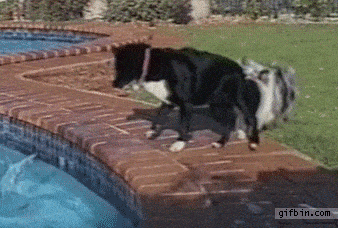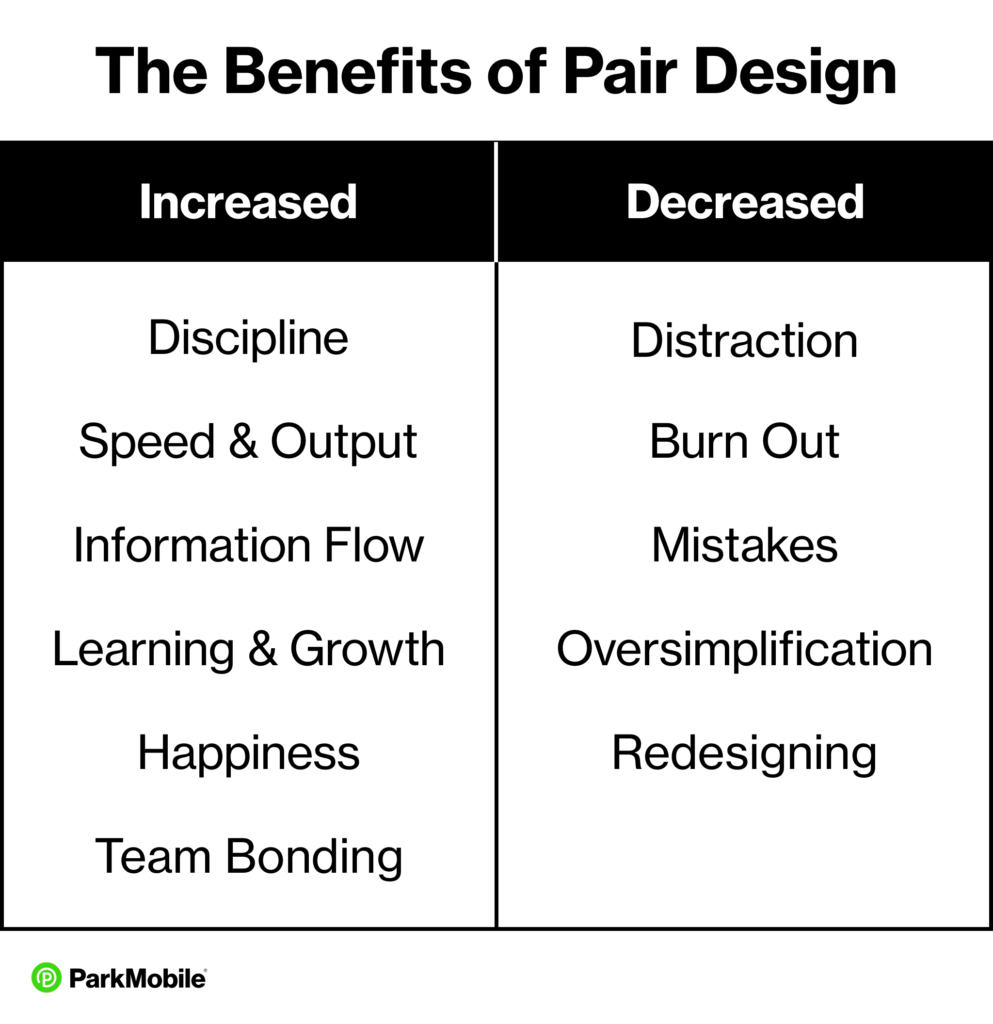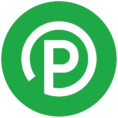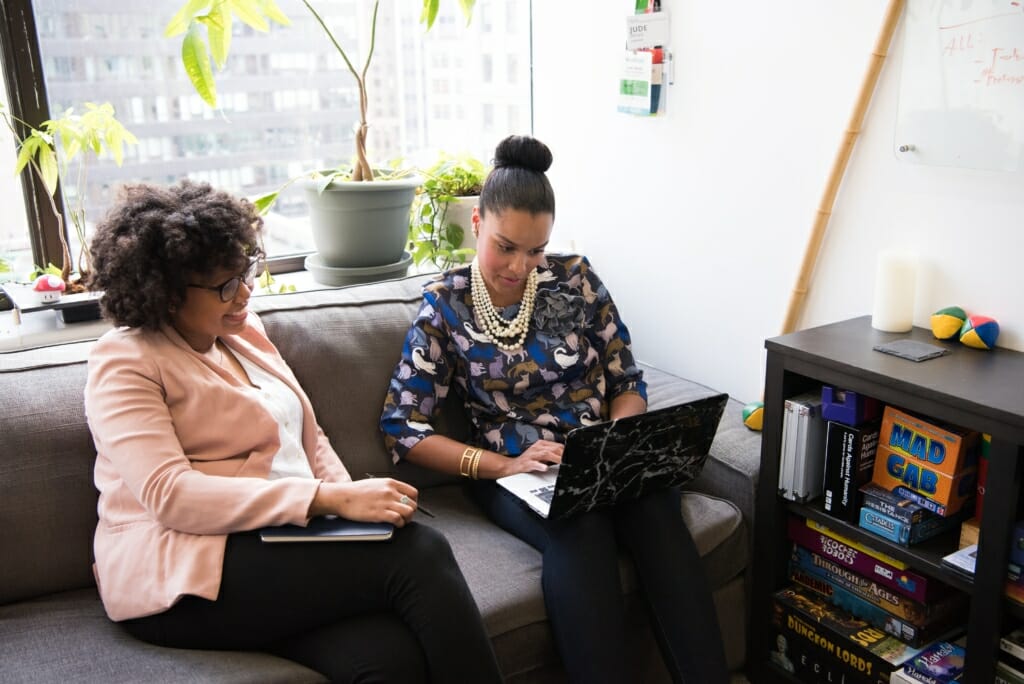At ParkMobile, our product design team loves to collaborate. It helps us create better experiences for our users and become smarter, happier individuals. And back in March, we decided to do a bit of spring cleaning to our design house – tidy up the way we do things and add new routines that help us work better, faster, stronger. As we tapped into our inner Marie Kondo, we decided to take collaboration to the next level by pair designing on a regular basis.
Pair design has been around since 2008, and was brought to life by Cooper Professional Education as a creative counterpart to pair programming (for a good time, read about CPE in Kim Goodwin’s Designing for the Digital Age). But while pair programming is widely known and used, pair design feels “up and coming” every time we read and hear about it.
Our team is excited to have pair design as an integral part of our process, and we’re here to teach you about it so you can incorporate it into your work. Wouldn’t it be awesome to make great designs through shared ownership, and you get stronger and happier along the way?
What the heck is pair design?

At its essence, pair design is the practice of putting two designers together as thought partners to solve a problem. Seems like a simple concept, right? It is! But pay attention to the most important part of this definition – as thought partners. Pair design goes beyond typical collaboration, and it doesn’t let you “fly solo.” As thought partners, both designers share ownership of what’s being created, share responsibility for making it great, and share the risks and rewards of their work.
As mentioned earlier, pair design isn’t a new process, but it’s rarely used (and talked about). This is unfortunate, because the benefits of pair design are numerous.
Why is it good for me and my team?
Your team ends up with higher quality decisions, which lead to better solutions.
Work is validated continuously, instead of retrospectively.
Your mindset shifts to “this can be done in stages that improve the experience over time” instead of the crushing pressure of “this must be perfect.”
Everyone shares ownership in the solutions, which holds you all accountable and helps you rise and fall together.

How do I do it?
Your team can practice pair design in any phase of your product or project: discovery, low- to medium- fidelity design, high-fidelity design, and handoff to developers. Isn’t this just great?!
Design leader and education powerhouse CPE created a simple formula that empowers both designers to be thought partners at any point in the design journey.
Pair Design Formula
- Meet in a time-boxed working session and assign clear roles to each person. One is the generator and one is the synthesizer. This balances the workload and helps both designers be more efficient, together.
- The generator comes up with ideas and brings them to life on a whiteboard, collaborative tool, or digital design tool. You think out loud as you create, so the reasoning behind your explorations, decisions, and designs are always surfaced and considered.
- The synthesizer insightfully challenges and improves the design, while thinking about the big picture. You ask questions, raise concerns, connect existing concepts, and keep discussions grounded to meet goals.
Tips for Pair Designing
Here are some added tips for using this formula with your team:
- The pair design roles are fluid, meaning the designers can switch at any point. If your session is longer than one hour, you should take a quick break half-way through and switch roles.
- Time spent in each role should be equal between both designers. Make sure one person isn’t being consistently stuck in one role.
- Be accountability buddies for each other – one person sees the trees, the other sees the forest. One is acting, the other is reviewing. Ask questions, play the role of various stakeholders or personas, check for consistency, errors, etc.
- Leave your ego out of the room. In pair design, the goal is to arrive at the best decision to solve a user need or challenge. Seniority and experience help bring knowledge “to the table” but don’t automatically make your ideas the right ones. If you’re acting as generator and your partner pushes back on something you say, don’t take it personally!
- Foster an environment for fast decision-making during brainstorm sessions. If you can meet in person, use analog methods like a whiteboard or pen and paper. If you’re working remotely, try a tool like Freehand by Invision. These simple-yet-powerful tools let you focus on ideas and stay out of the weeds.
What else do I need to know?
Pair design can bring fast improvement to your team’s outlook and output. We pair design at least one time per week and see a constant improvement in both areas—and it’s noticed by other teams that we interact with on a regular basis!
It can also take time for your team to adjust to this level of collaboration, and that’s absolutely fine. Stay patient, open-minded, and follow ParkMobile to learn more about bringing pair design to your team.
Coming up, we’ll share more specific rules to follow, hurdles you might meet (and how to overcome them), as well as stories from our own team’s experience with pair design.



 Get it on Google Play
Get it on Google Play